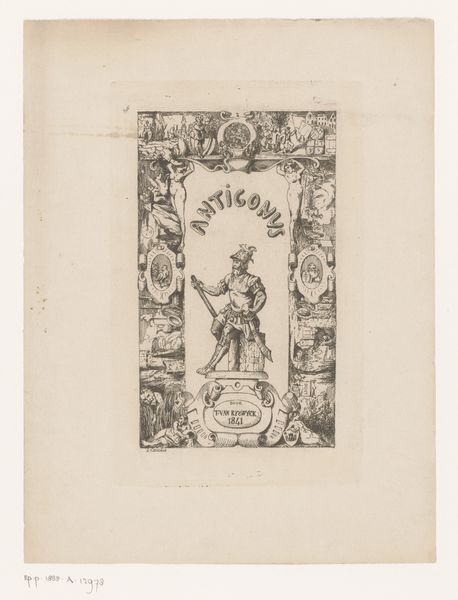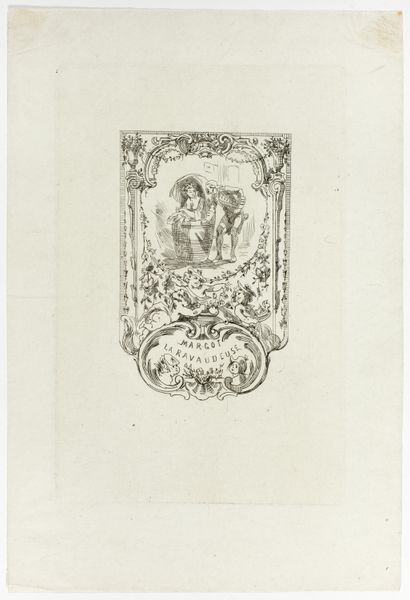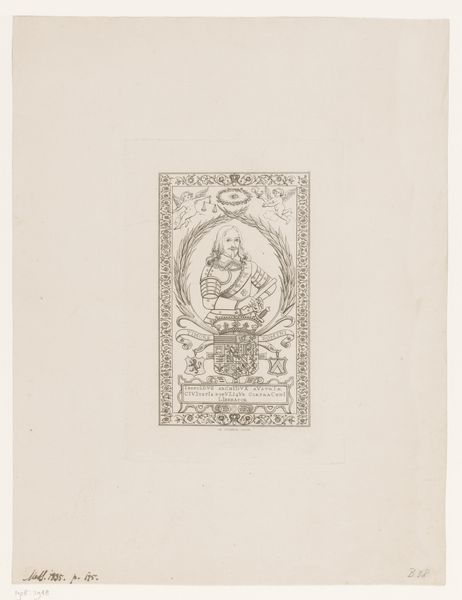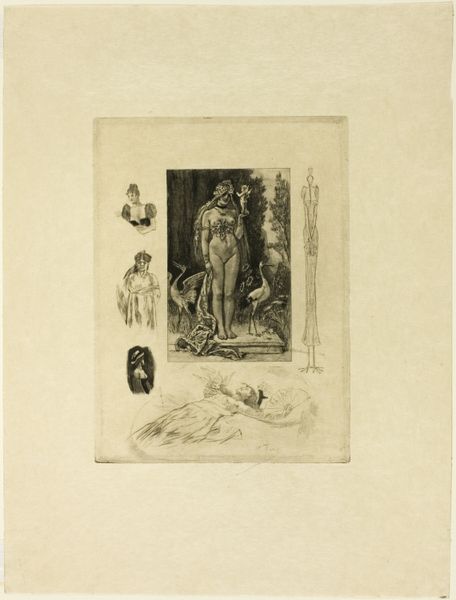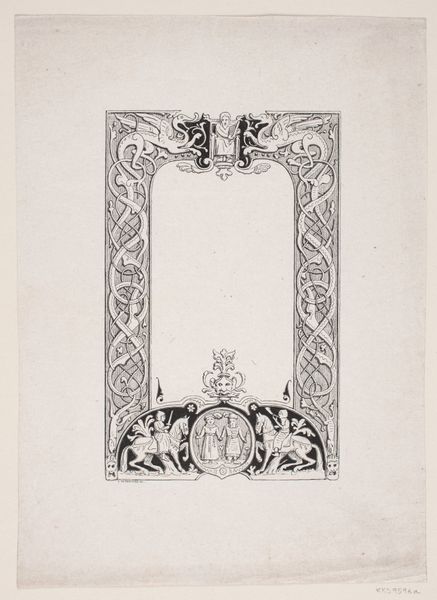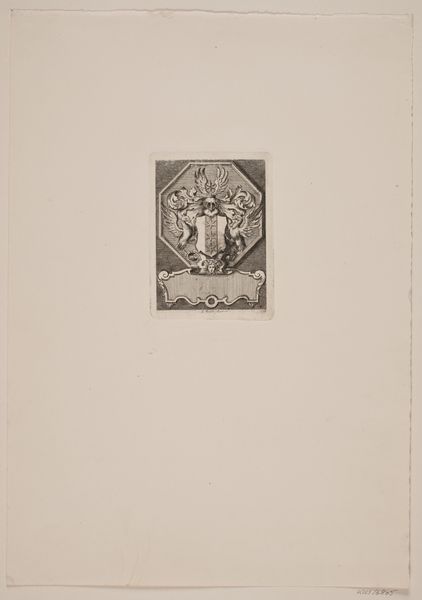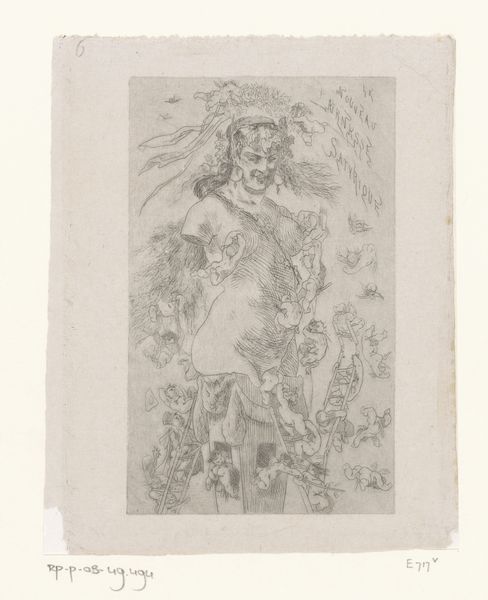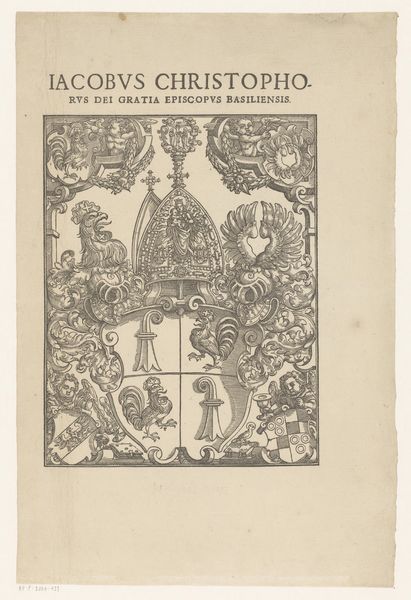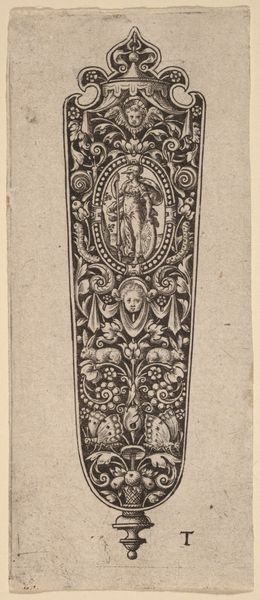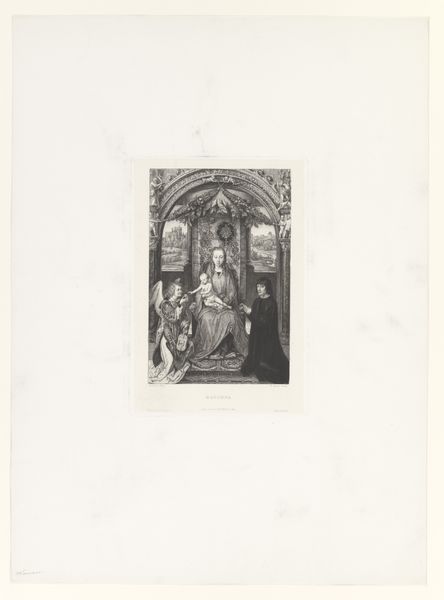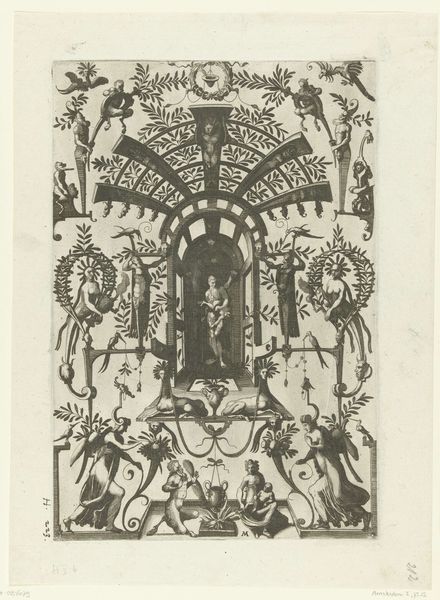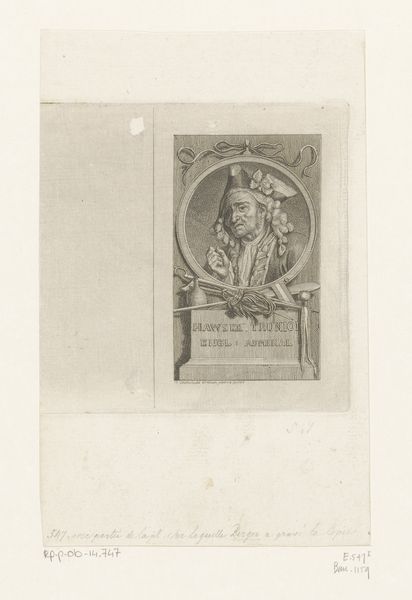
Dimensions: height 561 mm, width 420 mm
Copyright: Rijks Museum: Open Domain
Editor: Here we have an anonymous print, "Maria door twee engelen gekroond", likely made sometime between 1750 and 1850 using the intaglio process. It feels quite intricate, almost obsessive in its detail. What strikes you when you look at it? Curator: I see a fascinating intersection of the devotional image and the means of its production. Consider the laborious act of engraving, meticulously incising lines into a metal plate to reproduce this image of Mary. The print becomes a commodity, disseminating faith through mass production, collapsing the sacred and the secular. What impact might this have on Baroque society's notion of the divine? Editor: That's an interesting point. It's easy to forget the work involved when you see a finished print. Does the repetition inherent in printmaking diminish its artistic value, or does it democratize art? Curator: The idea of "artistic value" is precisely what's challenged. Think about the role of workshops, the division of labor, the economics of print distribution. It prompts us to question authorship, originality, and how those concepts are tied to the dominant narratives about art. Also, does the widespread distribution enhance the meaning, making it available to a broad segment of society who could afford this 'artwork', thereby democratizing and giving the 'divine' to the masses? Editor: So, looking at it this way, the print isn’t just about religious iconography, but also about the socioeconomic conditions that made it possible. Curator: Precisely. It invites us to explore the relationship between faith, craft, and capital, and how the processes of artistic production actively shape meaning and consumption. This image highlights how the work changed the cultural meaning of icons. Editor: That’s given me a lot to think about. I definitely see this piece in a different light now. Curator: And perhaps it illuminates the importance of looking at the making of things as part of the art experience.
Comments
No comments
Be the first to comment and join the conversation on the ultimate creative platform.
